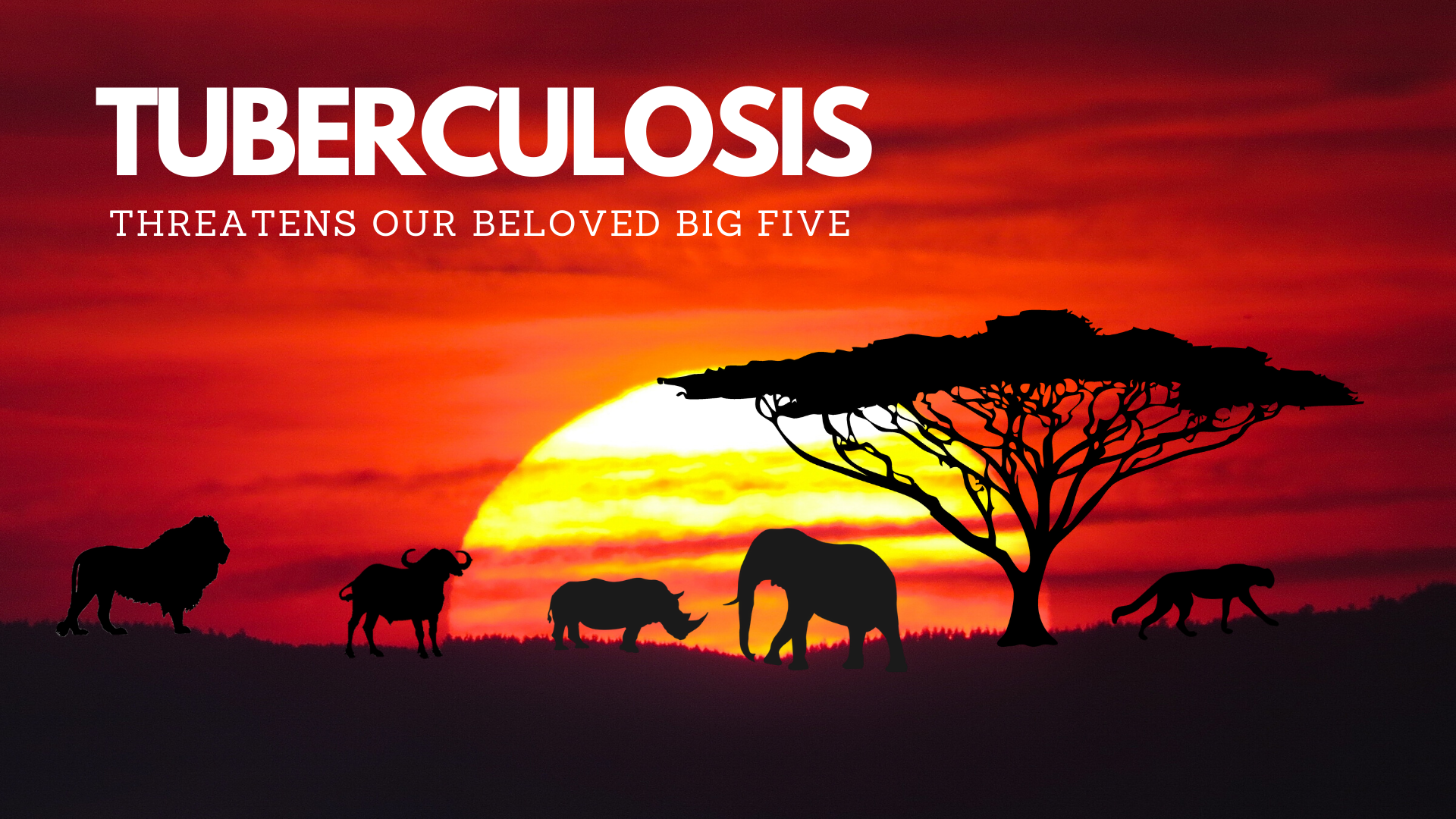It is no secret that Southern Africa shoulders a major burden with regards to tuberculosis (TB), indeed fifth highest in the world. But did you know that TB also affects domestic animals such as cattle? And when you’re on a game drive in the beautiful Kruger National Park to spot a lioness with great excitement, only to realise she looks gaunt or sickly, does TB come to mind?
The unfortunate truth is, there are two dangerous TB strains, or ‘close-relatives’. Both infect and are transmitted back and forth between humans and animals, thus termed ‘zoonotic’.
Human TB is easily transmitted to cattle when, unawares, infected owners interact with their animals. Vice versa, if a cow has bovine TB (the more common animal strain), this can be passed to any humans in close contact, particularly if they drink unpasteurized milk or eat meat from the animal. In fact, before pasteurization of milk became law, up to 20% of human TB cases globally was the bovine form.

This is a risky cycle when considering that many communities in Southern Africa lack education regarding human TB, never mind the associated risks from communal cattle or adjacent game reserves where bovine TB is endemic. This naturally hinders progress toward eradicating human TB. The World Health Organisation (WHO) highlights the importance of integrating human and animal research for zoonoses in their ‘One Health’ Strategy.
So how does our research fit in? We focus on wildlife TB infecting elephants, rhinoceros, lions, leopards and buffaloes; yes, every magnificent member of the Big Five faces a TB threat. Tuberculosis also infects cheetahs, kudu, baboons and warthogs, amongst other species, in Kruger National Park, Hluhluwe-iMfolozi Game Reserve and other private farms and game reserves. Many such regions border communal farms and towns hence wildlife TB poses a public health challenge in combination with conservation threat, particularly for a critically endangered species such as black rhino.

Wildlife TB in South Africa began with the spread of TB from cattle into the African buffalo population in the 1990’s. Subsequently, because many animals feed on buffaloes, these species also became infected and threatened.
Tuberculosis is actually described as a re-emerging disease due to historical evidence indicating TB infections in Asian elephants over 2 000 years ago!
This pathogen has been around for very long and has evolved to infect multiple different hosts. It is also unique because in many cases it does not cause severe disease or fatalities. This is concerning due to infected animals and humans transmitting or ‘shedding’ the bacteria for years before diagnosis or treatment.
We investigate how to most efficiently diagnose TB in wildlife species in order to contain the spread of the disease and to better understand TB transmission in wildlife populations.
The only approved diagnostic test for TB in humans and cattle remains the ‘skin test’. This test can be very challenging in wildlife due to a requirement for two separate chemical immobilizations. That is, the animal is captured and ‘put under’ followed by measurements of its neck skin, and injections, before confinement for three days. This procedure is then repeated to acquire the second set of measurements. In short, laborious and expensive! Not to mention the stress and casualties experienced by the animals, particularly for scenarios involving, for example, large buffalo herds. Furthermore, the test has suboptimal sensitivity and specificity, two defining characteristics in diagnostics. Briefly, sensitivity is the ability of a test to correctly identify all positive (infected) cases, whereas specificity is the ability of the test to correctly identify uninfected cases.
Our diagnostic tests are blood-based, therefore, require a single immobilization and blood-draw. This blood is incubated overnight in tubes containing ‘triggers’ that mimic a TB bacterium’s antigens. Antigens are foreign molecules that induce the host’s (us, an animal’s) immune response. Once the host has encountered a particular pathogen and developed a specific immune response to it, a ‘memory’ is formed of the invader. The immune system is then ‘armed’ for subsequent attacks. We take advantage of this memory by stimulating the blood to produce various immune molecules in response to what it thinks is TB. If the animal has ever been infected with a TB bacterium its immune system will remember, producing a measurable response. After stimulation, we investigate gene expression of immune cell pathways or harvest the plasma to search for molecules involved in TB infection response. These diagnostic tests continue to display increased sensitivity and specificity over traditional tests.
Do not fear, our Big Five aren’t going anywhere! However, we must continue to fight the very real threats that they face. Knowledge is power so educate those around you because to end the burgeoning TB epidemic will require a multi-faceted fight!


